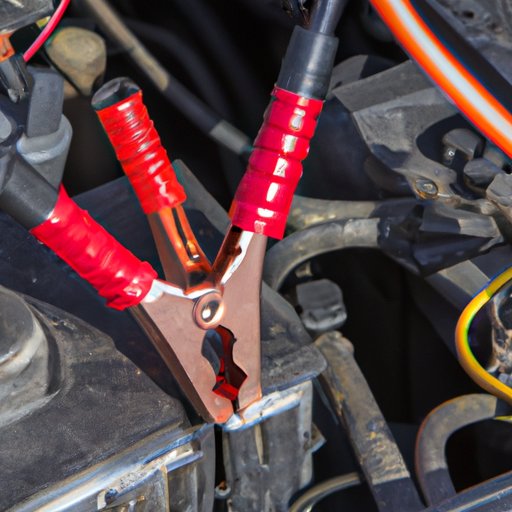
Introduction
Jumper cables are an essential item for any driver to have in their car. Dead batteries can happen to anyone, so knowing how to connect jumper cables may be the difference between getting back on the road or being stranded. This article aims to provide steps and tips to help you connect jumper cables safely and effectively.
Step-by-Step Guide
Before you begin, make sure that both cars are in the same location, and the key is off in both vehicles. You will need a set of jumper cables. Some jumper cables are all black while some have one red and one black clamp.
Step 1: Find the Battery- Locate the battery in both cars and ensure that they are of the same voltage (typically 12 volts).
Step 2: Connect the Red Clamp- Connect the red clamp to the positive terminal on the dead battery.
Step 3: Connect the other Red Clamp- Connect the other red clamp to the positive terminal on the charged battery.
Step 4: Connect the Black Clamp- Connect the black clamp to the negative terminal on the charged battery.
Step 5: Ground the Cable- Connect the other black clamp to an unpainted metal surface on the engine block or frame of the dead car. The engine block or frame must be grounded to the negative terminal of the battery.
Step 6: Start the Charged Car- Start the charged car and allow it to run for about five minutes.
Step 7: Start the Dead Car- Start the dead car while leaving the charged car running and allow both cars to run for about 15 minutes.
Step 8: Disconnect the Cables- Disconnect the cables in reverse order: the black clamp on the dead car, then the black clamp on the charged car, the red clamp on the charged car, and finally, the red clamp on the dead car.
Congratulations, you have successfully connected jumper cables!
Safety Precautions
While jumping a dead car battery is a relatively simple process, it does carry some potential hazards.
First, keep in mind that you are working with electrical currents. Make sure that when connecting the cables, you never let the clamps touch each other. When removing the clamps, do so carefully, again avoiding contact between the clamps.
Secondly, never connect your jumper cables to damaged batteries or corroded terminals. This can cause a spark, which can lead to a potentially dangerous explosion.
Finally, ensure that the jumper cables are not damaged or frayed before use.
Troubleshooting
While jumpstarting a car battery usually goes smoothly, there are some common issues that can arise.
If the dead car doesn’t start after jumpstarting: Check the clamps and their connections. If everything looks correct, there may be a bigger issue with the dead battery, and it may need to be replaced.
If there are sparks when connecting the cables: Do not continue the jumpstart! Ensure that the clamps are not touching each other and double-check that they are connected to the correct terminals.
Differences in Jumper Cables
There are several types of jumper cables to choose from, so it’s important to choose the right one for your needs.
The length of the cables is essential, so look for at least 12-20 feet or more. Jumper cables with a higher gauge number may result in a slower charge, but they are perfect for smaller vehicles.
Some jumper cables have one red and one black clamp. While this configuration might be easy to remember, other models have all-black clamps, which help you avoid mistakes by ensuring that you connect the right clamps properly.
Jumper Cables Maintenance
It’s important to care for your jumper cables, including regular cleaning, inspection, and storage.
After use, clean the cables thoroughly with a wire brush and remove any corrosion on the clamps. Store them away from other metallic and electrical objects, potentially creating a short circuit.
Periodically inspect your jumper cables for wear and tear, including visible damage to the cables, frayed wires, and broken clamps.
Jumper Cables and How They Work
Jumper cables work by transferring electricity from one car’s battery to another’s.
A car’s battery produces direct current (DC) electricity that is stored within the battery’s cells and available for immediate use. However, when other electrical systems within the vehicle draw power from the battery, the level of stored electricity will begin to decrease, potentially leading to a dead battery.
When a jumper cable connects two car batteries, the battery with the higher voltage transfers its stored energy to the one with the lower. The dead battery receives this stored energy, and the car should be able to restart.
Conclusion
In conclusion, knowing how to connect jumper cables safely and effectively is essential. Whether you’ve found yourself stranded with a dead car battery or simply want to be prepared, these step-by-step instructions should help provide you the knowledge you need to jumpstart your car and stay safe in the process.
Remember, taking precautions to ensure your safety is just as important as jumpstarting your car. Always be aware of the potential hazards when working with jumper cables and follow the necessary safety measures.
If you have found this article helpful, please share it with others in your life who may benefit from learning how to connect jumper cables.





